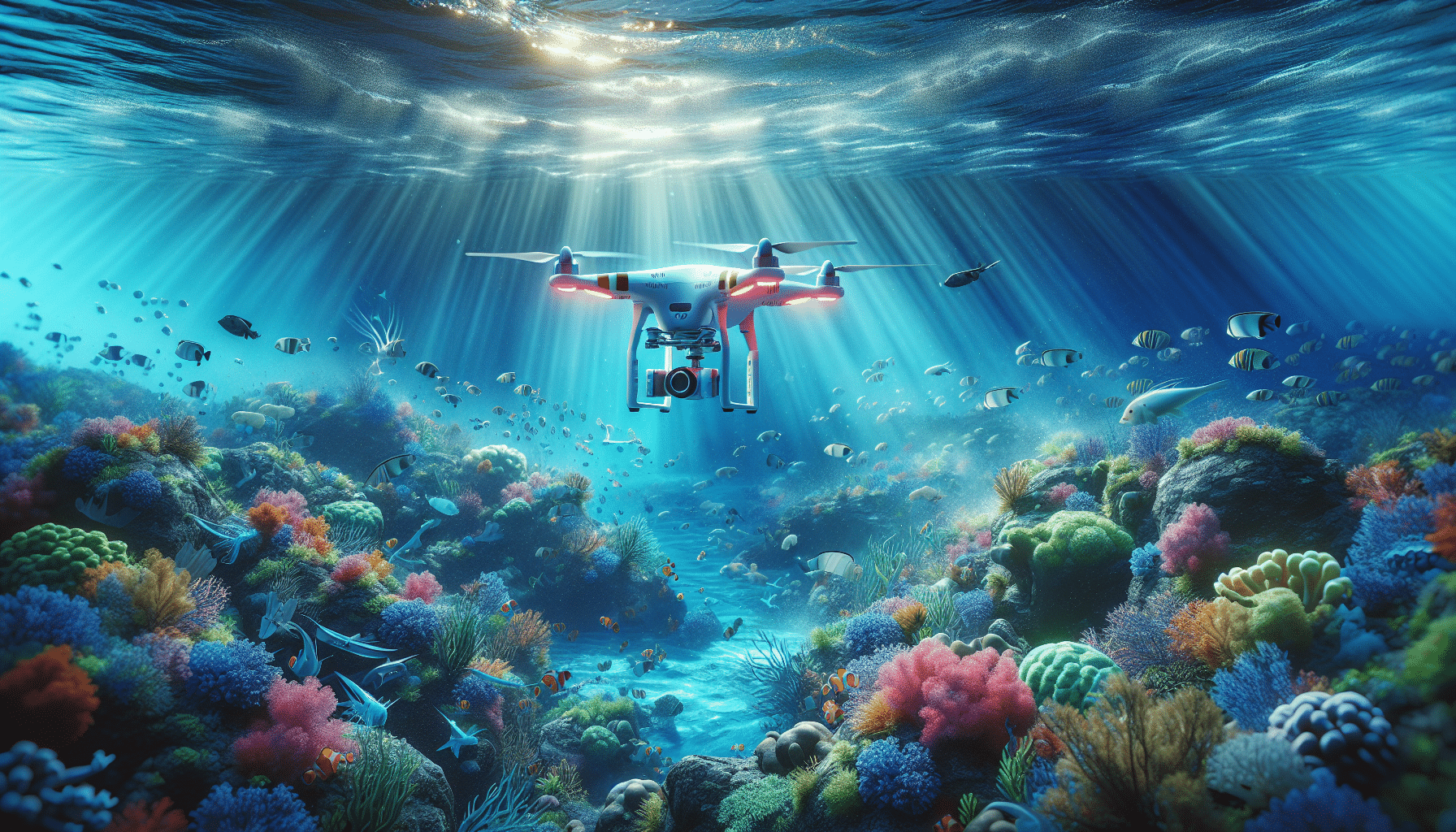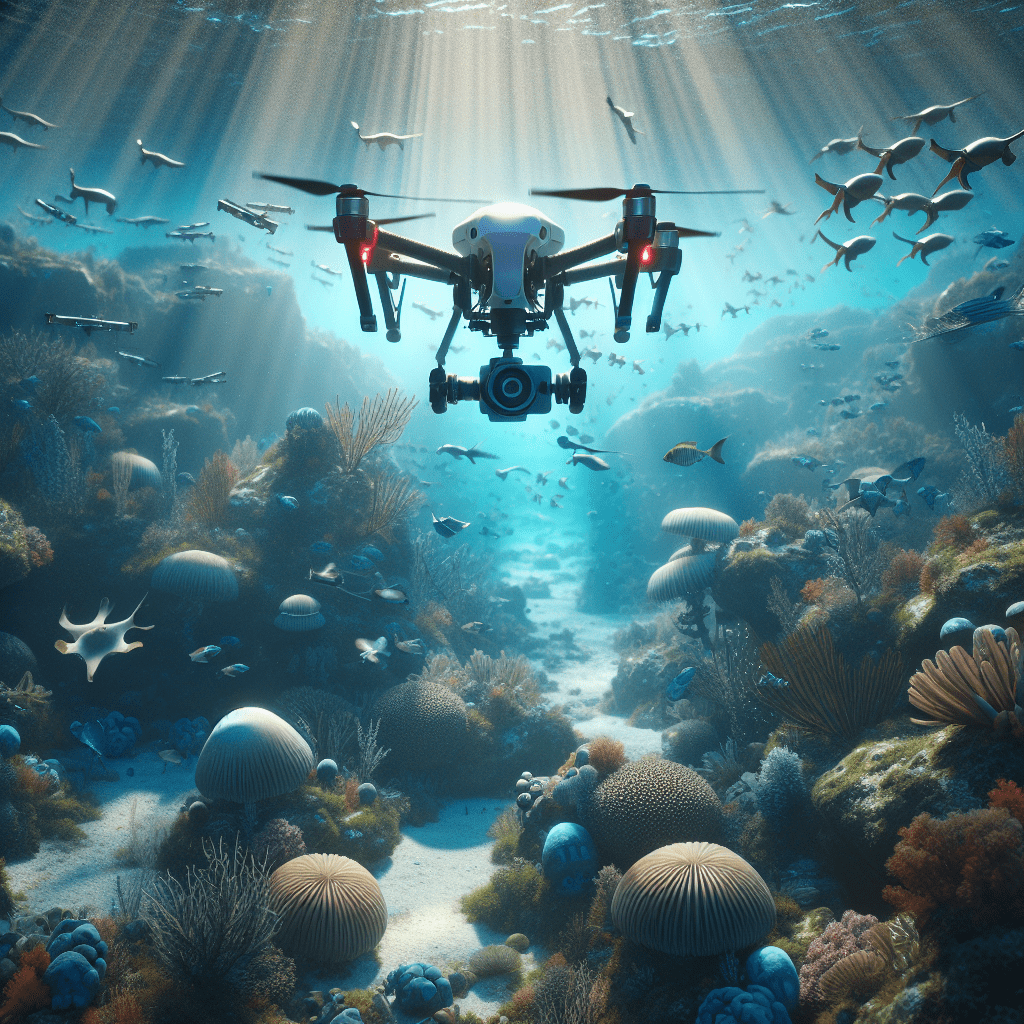The Role of Drones in Marine Biology
Drones, or unmanned aerial vehicles (UAVs), are transforming the field of marine biology. These aerial devices are equipped with high-resolution cameras and advanced sensors, allowing scientists to collect data with precision and efficiency. The application of drones in marine environments extends far beyond simple photography; they can monitor water quality, track wildlife movements, and survey vast coastal areas. One of the critical advantages of drones is their ability to operate in difficult or hazardous environments where traditional methods may be impractical or risky.

For instance, researchers studying coral reefs can use drones to conduct aerial surveys, gathering detailed images of coral cover and health without disturbing the delicate ecosystem below. This non-invasive method not only saves time but also reduces the stress on marine organisms. By deploying drones, scientists can gather data that informs conservation efforts, leading to healthier marine habitats.
Monitoring Marine Mammals
Drones play a crucial role in the monitoring of marine mammals, such as whales, dolphins, and seals. These creatures often inhabit remote or hard-to-reach areas, which can make traditional survey methods challenging. With drones, researchers can safely observe and record the behaviours and movements of these animals from a distance. This remote observation is particularly beneficial for monitoring endangered species, as researchers can focus on gentle, non-invasive techniques that minimise human interference.
A notable example is the use of drones to monitor Steller sea lions, a species classified as endangered. NOAA Fisheries has successfully employed drones since 2014 to augment its annual abundance surveys, allowing them to track the population trends of these mammals in a more efficient manner. Through the use of aerial imagery, scientists can better assess the health and reproductive success of these populations, providing critical data for their protection and recovery.
Surveying Critical Habitats
The surveying of critical habitats is another significant function of drones in marine biology. Their ability to cover large areas quickly and capture detailed imagery makes them ideal for mapping critical habitats such as nesting sites, feeding grounds, and migratory pathways. By using drones equipped with specialised sensors, researchers can gather information on vegetation cover, habitat quality, and even the presence of invasive species. This data is invaluable for developing management and conservation plans aimed at protecting these crucial habitats.
For example, drones have been utilised to survey seagrass beds, which provide essential ecosystem services, including carbon sequestration, habitat for marine life, and water filtration. By mapping these areas accurately, especially those under threat from climate change or human activity, scientists can focus conservation efforts effectively, ensuring that these ecosystems are preserved for future generations.
Drones and Environmental Threats
As beneficial as drones are in marine biology, concerns about their impact on critical infrastructure and wildlife remain prevalent. While they offer numerous advantages, some researchers vocalise apprehensions regarding potential disturbances to sensitive marine environments and wildlife. Additionally, the increasing use of drones raises questions about their regulation and how they might interfere with existing marine life or habitat conservation efforts.
“Drones offer unprecedented access to marine habitats but also necessitate careful consideration of their environmental impact.”
Critical infrastructure, such as wind farms, ports, and marine reserves, could also be affected by the increased prevalence of drones in coastal areas. The management of drone operations must consider important factors such as airspace rules, noise pollution, and the potential for drones to disrupt marine navigation. Striking a balance between innovation and environmental protection is essential.
Policy Implications
From a policy perspective, regulations surrounding the use of drones in marine environments are still evolving. Policymakers must collaborate with marine biologists and conservationists to create guidelines that promote responsible drone usage. These guidelines should include best practices, operational limits, and safety measures to ensure that drones effectively enhance marine research without detrimental effects on sensitive areas.
Furthermore, it is vital to involve local communities in discussions about drone use and its implications for their marine resources. Engaging stakeholders in the decision-making process can lead to more sustainable practices that protect both marine environments and community interests.
Advantages of Aquatic Drones for Coastal Monitoring
Aquatic drones, also known as underwater drones or remotely operated vehicles (ROVs), offer unique advantages for monitoring coastal areas. Unlike traditional aerial drones, these devices operate underwater and can gather data from depths that aerial platforms cannot reach. This capability allows researchers to conduct detailed assessments of underwater ecosystems, such as coral reefs, kelp forests, and fish populations.

Aquatic drones provide a level of detail previously unattainable through surface observations. Equipped with sensors and cameras capable of capturing high-definition images and water quality measurements, these drones enable researchers to monitor changes in marine habitats and detect early signs of ecological disturbances.
Monitoring Water Quality
Water quality monitoring is one of the most critical applications of aquatic drones. They are equipped to measure parameters such as temperature, salinity, dissolved oxygen, and nutrient levels, providing a comprehensive perspective on the health of coastal waters. This data can be invaluable for understanding trends related to pollution, climate change, and habitat degradation.
As an illustration, aquatic drones have been instrumental in monitoring harmful algal blooms (HABs), which can devastate marine ecosystems. By collecting data on algal concentrations and the factors contributing to bloom occurrences, researchers can develop strategies to mitigate their impact. The use of aquatic drones allows for real-time data collection, significantly enhancing response capabilities during potential algal bloom events.
Cost-Effectiveness and Accessibility
Another key advantage of using drones in marine biology is cost-effectiveness. Traditional survey methods, like manned aircraft or boats equipped with extensive monitoring equipment, can be expensive and logistically challenging. Drones provide a more affordable alternative, particularly for researchers with limited budgets. Moreover, drone technology has become increasingly accessible, with many off-the-shelf options available on the market today.
The cost savings associated with drone usage can be transformative, allowing more research projects to be conducted over larger areas with greater frequency. With their ability to gather extensive data efficiently, drones democratise scientific research in marine biology, providing a means for more comprehensive ecological assessments.
Future Trends in Drone Technology for Marine Biology
The future of drones in marine biology looks promising, with technological advancements continuing to enhance their capabilities. Ongoing developments include improved battery life, automated flight planning, and advanced data analytics, all of which will further broaden the scope of research applications. Automated drones, for example, could carry out repetitive survey tasks without constant supervision, maximising research efficiency.

Furthermore, innovations in data processing and artificial intelligence will enable researchers to analyse vast amounts of data collected by drones quickly. This could lead to better predictive modelling of marine ecosystems, significantly aiding conservation efforts. Imagery taken from drone surveys can be processed using machine learning algorithms, identifying patterns and trends that would otherwise require extensive manpower to uncover.
Real-World Applications
Various case studies illustrate the transformative potential of drones in marine biology. For instance, researchers in Hawaii have used drones to monitor the health of coral reefs by surveying large swathes of reefs annually. This data helps gauge the effectiveness of conservation practices and track the impacts of climate change on coral ecosystems.
In another example, drones are being tested in the Southern Ocean to assess krill populations, which are foundational to the marine food web. By using drones for regular population assessments, scientists can better understand how climate change impacts this keystone species, ultimately influencing broader marine life dynamics.
Conclusion
In summary, drones have emerged as indispensable tools in marine biology, providing researchers with innovative ways to survey critical habitats and monitor marine biodiversity. Their adaptability and efficiency in various applications—from observing marine mammals to mapping underwater ecosystems—are reshaping how scientists conduct their work. While challenges remain concerning their impact on critical infrastructure and wildlife, the potential benefits of drones far outweigh these concerns, provided that their use is regulated responsibly.
The ongoing evolution of drone technology promises to unlock even more capabilities for marine research, improving conservation efforts and ensuring the protection of vital marine ecosystems. As our oceans face unprecedented threats from climate change and human activity, drones are likely to play an essential role in safeguarding the future of marine life. Learn more about our drone technology solutions for marine research.
Frequently Asked Questions
How are drones used in marine biology?
- Drones are used in marine biology to survey critical habitats, monitor ecosystems, and collect data for research.

